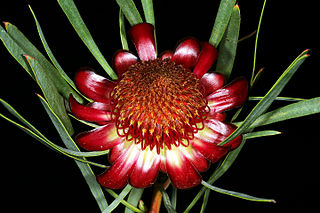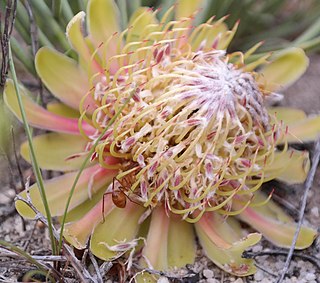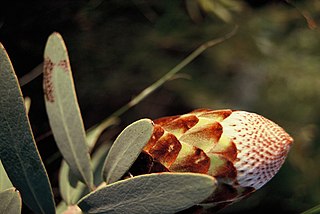
The International Union for Conservation of Nature (IUCN) Red List of Threatened Species, founded in 1964, is the world's most comprehensive inventory of the global conservation status of biological species. It uses a set of precise criteria to evaluate the extinction risk of thousands of species and subspecies. These criteria are relevant to all species and all regions of the world. With its strong scientific base, the IUCN Red List is recognized as the most authoritative guide to the status of biological diversity. A series of Regional Red Lists are produced by countries or organizations, which assess the risk of extinction to species within a political management unit.

The conservation status of a group of organisms indicates whether the group still exists and how likely the group is to become extinct in the near future. Many factors are taken into account when assessing conservation status: not simply the number of individuals remaining, but the overall increase or decrease in the population over time, breeding success rates, and known threats. Various systems of conservation status exist and are in use at international, multi-country, national and local levels as well as for consumer use.

An IUCN Red List Critically Endangered (CR) species is one that has been categorized by the International Union for Conservation of Nature as facing an extremely high risk of extinction in the wild. As of 2021, of the 120,372 species currently tracked by the IUCN, there are 8,404 species that are considered to be Critically Endangered.

A species that is extinct in the wild (EW) is one that has been categorized by the International Union for Conservation of Nature as known only by living members kept in captivity or as a naturalized population outside its historic range due to massive habitat loss.

The wildlife of South Africa consists of the flora and fauna of this country in southern Africa. The country has a range of different habitat types and an ecologically rich and diverse wildlife, vascular plants being particularly abundant, many of them endemic to the country. There are few forested areas, much savanna grassland, semi-arid Karoo vegetation and the fynbos of the Cape Floristic Region. Famed for its national parks and big game, 297 species of mammal have been recorded in South Africa, as well as 858 species of bird and over 20,000 species of vascular plants.

Carpoxylon macrospermum is a species of palm tree endemic to Vanuatu, and the only species in the genus Carpoxylon.

Leucadendron strobilinum, commonly called the peninsula conebush, is a plant species in the genus Leucadendron—forming part of the family Proteaceae. Confined to the Cape Peninsula, it reaches a height of up to 2.6 metres growing in southern, damp rocky slopes at an elevation of 500 to 1100m. Its conservation status is Near Threatened—a result of inappropriate fire management, fire-break clearing and alien plant invasions.
Multidentia sclerocarpa is a species of flowering plants in the family Rubiaceae. It is found in Kenya and Tanzania.

Protea comptonii, also known as saddleback sugarbush, is a smallish tree of the genus Protea in the family Proteaceae. It is found in South Africa and Eswatini.
Stenocarpus heterophyllus is a species of plant in the family Proteaceae. It is endemic to New Caledonia. It is threatened by habitat loss.
Stenocarpus villosus is a species of plant in the family Proteaceae. It is endemic to New Caledonia. It is threatened by habitat loss.

Zimmermannia bosquella is a moth of the family Nepticulidae. It is found in Virginia, Ohio and Kentucky in the United States. It is now classified as conspecific with the American chestnut moth, which was formerly considered as extinct.
Grevillea molyneuxii, commonly known as the Wingello grevillea, is a shrub which is endemic to the shrublands of New South Wales in Australia.

Protea acuminata, also known in English as the black-rim sugarbush, or in the Afrikaans language as sederbergsuikerbos, is a flowering shrub belonging to the genus Protea. The plant is endemic to South Africa. There are isolated populations at Nieuwoudtville, and in the Cederberg, Stettynskloof and Riviersonderend Mountains. It can grow as an upright tree. It can become up to two metres in height. It blooms from June to September, with the peak of July to August. Periodic wildfires may destroy the adult plants, but the seeds can survive such an event. The seeds are dispersed by means of the wind. The plant is monoecious with both sexes in each flower. It is unknown what causes the pollination to occur. The plant grows in sandy plains and coastal lowlands from sea-level to altitudes of 400 metres. It is a widespread species which is not in danger, and the conservation status has been assessed as 'least concern'.

Protea revoluta, also known as the roll-leaved sugarbush or rolled-leaf sugarbush, is a species of plant which is classified in the genus Protea. P. revoluta is only found growing in the wild in South Africa, where plants can be found growing between the Cederberg inland on the Atlantic coast and the Witteberg area to the north.

Protea inopina, the large-nut sugarbush, is a flowering shrub belonging to the well-known Protea genus. The plant is endemic to the Western Cape, rare, extremely isolated and occurs only in the Olifants River mountains near Palace Hill.

Protea scabriuscula, also known as the hoary sugarbush or gray sugarbush, is a flowering shrub, endemic to the southwestern Cape Region of South Africa.
Leucadendron spirale, the Wolseley conebush, was a flower-bearing shrub belonging to the genus Leucadendron and formed part of the fynbos. The plant was native to the Western Cape where it was found in the Breede River Valley between Wolseley and Botha, before becoming extinct. The plant was observed only four times, in 1801, 1819, 1820s and 1933.
Leucadendron macowanii, the acacia-leaf conebush, is a flower-bearing shrub that belongs to the genus Leucadendron and forms part of the fynbos. The plant is native to the Western Cape, South Africa.











